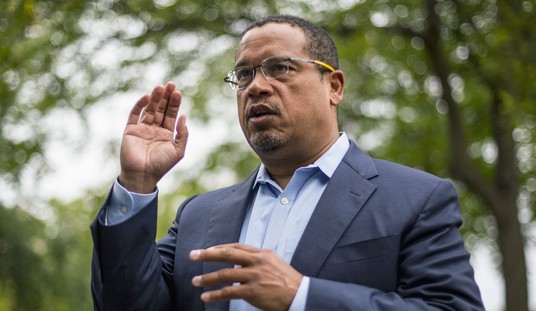Not exactly, Ben White writes, but the potential for backsliding keeps growing along with COVID-19 cases in the US. The V-shaped recovery that Donald Trump has promised — and desperately needs — hasn’t materialized either, White concludes. If that becomes apparent, and if Congress can’t continue backstopping consumers, any move to the negative likely will snowball.
That’s probably true, but …
Maybe the United States is sliding down the second slope of a W-shaped economic recovery as coronavirus cases surge. Or perhaps it’s in the flattening section of a reverse square root bounce. Or maybe we’ve hit the slow-rise portion of the Nike swoosh comeback.
Economists toss out all kinds of letters and shapes to discuss recovery from the brutal virus-induced recession. But they really have no clue where we are right now beyond one thing: This is obviously not the V-shaped bounce back predicted by hopeful Trump administration officials. Such a snap back never seemed plausible given the lack of a vaccine and the dice-rolling nature of most re-opening efforts. …
And things could look even worse when July jobs numbers come out early next month, putting more heat on Congress to act and further risking President Donald Trump’s polling advantage on the economy, which now appears mostly wiped out.
“The economy bounced back in May and June but it’s now gone sideways and I would not be surprised to see a net job loss in July,” Mark Zandi, chief economist at Moody’s Analytics, tells The Nightly. “I don’t expect the economy will go anywhere until the pandemic is over and there is a widely adopted vaccine. And if lawmakers wait more than a week or two to act there’s a very good chance we are back in recession.”
All of that could be true, but at least thus far there aren’t any indicators that it is … yet. White mentions the slight uptick in weekly initial jobless claims as an early red light on economic growth, but the change wasn’t necessarily significant enough to draw those conclusions. The WIJC numbers were higher in May and June — much higher in some weeks — and yet we added millions of jobs in both months.
One important point of context that got left out of the coverage of the jobless claims numbers was the dramatic drop in paid benefits. Since mid-June, that number dropped by more than four million, from 20,544,000 in the week ending on June 6 to 16,197,000 in yesterday’s report (week ending on July 18). The number fell 1.1 million in just one week, according to yesterday’s report from the Department of Labor. Since unemployment benefits have not expired — not even the bonus has expired yet — that indicates a strong movement back to paid work in July.
That momentum could stop if the backstop provided by Congress runs out, of course, thanks to government intervention in preventing commerce. Those restrictions have ramped up recently, and there is some anecdotal evidence that employers will cut workers loose without more subsidies keeping them on the job:
The PPP loan program was intended to be a short-term measure, just like the extra $600 in weekly unemployment benefits, to help get small businesses through the worst of the pandemic. But the pandemic outlasted the PPP.
Layoffs are beginning to spike again across the country — the number of new unemployment claims rose last week for the first time since March — as coronavirus cases soar, spurring cities and states to backtrack on reopenings only a month after appearing to turn the corner.
“It was just a Band-Aid on a bullet wound,” Nelson said of the PPP. “All it really did was prolong the agony of having our workers file for unemployment. Whether it’s April 15 or June 30, the end result is still the same.”
Those losing their jobs in late June and July are part of a wave of new layoffs from companies whose PPP money is expiring, economists say.
The PPP was perhaps the most successful of the programs in the original CARES Act. Replenishing that fund is a no-brainer, and it’s almost certain to be in any form of Phase 4 that passes. The trick will be to get it passed quickly enough to keep massive layoffs from occurring first, but so far those paid-benefit numbers don’t indicate that massive layoffs have yet begun.
As far as consumer spending — another concern of White’s, and legitimately so — the White House has now gone all-in on another round of direct stimulus. In contradiction to rumors, they will not restrict the funds for round two, as Mitch McConnell had hinted, but want an exact repeat of April’s stimulus payments. And this time, the money could get there even sooner:
The 160 million Americans who got stimulus checks earlier this year would get another payment as soon as next month under a plan being negotiated by Treasury Secretary Steven Mnuchin and Senate Majority Leader Mitch McConnell.
“Our proposal is the exact same provision as last time,” Mnuchin told reporters Thursday as he and congressional Republicans work to finalize a series of stimulus bills that will form the counteroffer to a plan from Democrats. …
Using the same parameters as the last round of stimulus payments would mean that the Internal Revenue Service could quickly deliver the money to people’s bank accounts and mailboxes. The IRS prioritized getting direct deposit information for households earlier this year, so the agency could deliver millions of electronic payments and not be slowed down by mailing paper checks.
The Senate GOP will unveil their bill on Monday, which means that they could still beat an August 1 deadline for passage. CNBC notes that the bill is more targeted than before, part of the GOP’s efforts to keep costs down to a small deluge of newly printed cash:
- It would extend enhanced federal unemployment insurance but “based on approximately 70% wage replacement,” according to Treasury Secretary Steven Mnuchin. Senate Majority Leader Mitch McConnell, R-Ky., has described a continuation as “temporary.” As of earlier this week, Republicans were considering paying out the supplemental aid through December, sources told CNBC.
- The plan would send another round of direct payments to Americans. It is unclear now if the bill would keep the same terms of eligibility as the stimulus checks approved in March ($1,200 to individuals and $2,400 to couples, which started to phase out at an average income of $75,000 per person and ended completely at an average income of $99,000).
- It would protect businesses, doctors and universities from coronavirus-related lawsuits except for cases of “gross negligence and intentional misconduct,” according to McConnell. He has described the provision as a “red line” in talks with Democrats.
- The legislation would include $105 billion to help schools restart, with at least part of the funding contingent on them opening their doors in the fall.
- The bill would authorize what Republicans have called a targeted second round of Paycheck Protection Program loans for small businesses hit particularly hard by the pandemic. Mnuchin said the aid could go to companies whose revenues have fallen more than 50%.
Those items will form the basis of intense negotiations, especially the liability questions and the lack of aid to state and local governments. At this point, everyone probably assumes Democrats will get something along the latter policy, probably in exchange for the liability protections.
If this passes quickly enough, there shouldn’t be too much disruption to jobs markets or consumer spending. Even if it’s a week or two after the expiration of the CARES Act provisions, the process of passing Phase 4 will send enough economic signals to keep the status quo in place. If so, then we won’t be talking about a V-shaped recovery or an M-shaped recession, but probably more slow make-up growth in Q3 that will take the edge off of a very bad year.
White’s not wrong in citing these concerns, but I’d say that it’s premature, at best. Right now it does not appear that we have started an economic retreat again, although the risk certainly exists.








